Johnny Johnson
John Arthur “Long John” Johnson played briefly with the 1939 Baltimore Elite Giants. He had a professional baseball career, in the second Negro National League, that spanned nine seasons from 1938 to 1946. A pitcher – starting and relief – he threw right-handed and batted left-handed; he stood 6-feet-3 and weighed 182 pounds.
Johnson’s career began in 1938 with the Newark Eagles, and possibly with the New York Black Yankees.1 A fine pitcher – noted as an “ace”2 in some newspaper reports – he played with numerous teams before joining the Eagles. In the NNL2 he played for the Eagles, the Elite Giants, the Homestead Grays, and the Black Yankees. According to James A. Riley, in his Biographical Encyclopedia of the Negro Leagues, Johnson also played with the Birmingham Black Barons in 1941-1942.
Born on September 26, 1915, in Louisiana,3 Johnson was one of seven children. His father, Columbus Johnson, was born in Jefferson, Texas, on February 24, 1884. Columbus, who worked as a laborer and yardman for a sawmill company, married Minnie Shaw on July 7, 1903. Minnie is identified as a homemaker. Their first four children, Venolia (born 1905), Lula (1910), Jennie (1912), and Fannie (1914) were born in Jefferson. Their next three children, John Arthur (1915), Minnie (1917), and Eddie (1920), were born in Caddo Parish, Louisiana.4 Columbus died on April 14, 1953, and Minnie died on February 20, 1961.
It appears that Johnson’s baseball career began in Louisiana, and possibly continued in Arkansas, with local amateur or semipro teams. From Monroe, Louisiana, to Buffalo, New York, Johnson’s name appeared on rosters for several teams before he played in the Negro National League. One of the earlier references (1935) to Johnson while with the Monroe Monarchs notes him as “Arthur Johnson.” It said: “The team will probably be on the road for three months. … Players making the trip were Manager Frank Johnson; Catchers Harry Else and Ernest Smith; Infielders Johnny Washington, Andrew Henderson, Clarence Lamar, Jiggs Maxwell; Outfielders Otis Henry, Jack Moore, Booker Harmon; Pitchers Hilton Smith, Barney Morris, J.B. Griffin, [John] Arthur Johnson, Leland Foster, Hugh Little and Homer Allen.”5 Another 1935 article refers to Johnson: “John Arthur Johnson of Cedar Grove [Louisiana], who won many games for the Monarchs in their recent tour is scheduled to pitch one of the games against the [Shreveport] Tigers.”6
By 1936, Johnson received additional attention, including a somewhat biographical newspaper piece:
In an effort to be at their best for the three-game series with the New Orleans Black Pelicans, the Shreveport Tigers yesterday signed John Arthur Johnson, former Monroe Monarchs ace hurler. The slim six-foot-three inch negro will oppose the Pelicans at Dixie Park Sunday. … Johnson travelled with the Monroe Monarchs last. season and this year started with a Cincinnati team and later went to Nashville. He was obtained by the Washington Elites of Washington, D.C., and remained with that team until last week. Johnson’s home is in Cedar Grove.”7 He began the 1937 season with the Shreveport Tigers: “The Shreveport Tigers will line up as follows: Floyd, 1b; Doyle, 2b; Chapman, ss; Williams, 3b; Dawson, c; Guillard, lf; Johnson,8 cf; Young, rf; and Gibson, John Johnson, Percy Dudlow and Lefty Crumberley to do the pitching.9
In 1938 Johnson made the trip from Louisiana to Buffalo, New York, and there played for the Buffalo Aces, an associate member of the 1938 Negro National League.10 The Aces had a strong connection with Arkansas, and specifically with the Claybrook Tigers and the city of Marianna, Arkansas hosted Negro League spring training in 1938 for the Aces.11 Regarding the Buffalo Aces, Johnson achieved some notoriety: “John Arthur Johnson, a pitcher with the Buffalo Aces, local Negro National League entrant, is one of the twirlers who holds a decision over the great Satchel Paige, fireball pitcher deluxe.”12 Not yet a member of the Newark Eagles, Johnson earned some not flattering reference in the press: “The Eagles pounded Dunbar and Johnson for 12 safeties.”13 And when the “Black Senators Defeat Buffalo, “J. Johnson” is noted as the pitcher.14
Also in 1938, Johnson joined the Newark Eagles under managers Abe Manley and Dick Lundy. Seamheads records that Johnson appeared in one game as the starting pitcher; he pitched nine innings and won the game. However, if the relief pitcher Johnson, referenced in an August 25, 1938, article, is indeed Johnny Johnson, then it can be inferred that he appeared in more than one game: “Ace Parker went the entire 16 innings for the Grays while John Johnson, relieving Bob Evans in the 4th, matched him stride for stride until being removed for a pinch hitter in the 15th inning.”15
As will be noted, due to brief playing times with the NNL2 clubs, Johnson likely played on other teams during each of the seasons. For example, he played in only three known games with the NNL2 champion Baltimore Elite Giants, pitching 6 2/3 innings and having no wins under manager Felton Snow. The team, however, played under other names and Johnson appeared with the Nashville Elite Giants vs. the Chevrolet Red Sox: “On page 24, the June 21 Philadelphia Inquirer listed a 6:00 P.M. game for that evening at Paterson, New Jersey between the Nashville Elite Giants and Jamieson’s Red Sox. Jack Eelman was the pitcher for the Red Sox (who had a second baseman named Paterson). He held the Elite Giants to eight base hits and allowed just one run in the sixth and another in the ninth. Johnny Johnson pitched for the Giants and surrendered two in the bottom of the first inning – on a single, double, infield out, and another single. A walk and a triple by the local centerfielder scored the third run. How the Elite Giants scored was not documented in the Paterson Evening News, though it was reported that West and Wright each drove in a run.”16
Between 1940 and 1943, Johnson’s story becomes cloudier. James Riley mentions that he may have played with the Birmingham Black Barons in 1941 and 1942.17 Johnson did register for the military draft on October 16, 1940. Although the 1940 US Census notes his occupation as “Ball Player,” his employer indicated on his draft card is W.E. Wheless, associated with the Allen Mfg. Co. in Shreveport, Caddo [Parish], Louisiana. Also of interest on the draft card is his cited place of birth as Jefferson, Texas – further confusing his actual birthplace.
In 1944 the Homestead Grays were champions of the NNL2. Johnson was a member of this team and appeared in 13 games under manager Candy Jim Taylor. Johnson did not compile a noteworthy record – he started six games and pitched 63 1/3 innings but won only one game and lost six. However, he was part of a very noteworthy rotation that included Ray Brown, Edsall Walker, and Spoon Carter.
In 1945 and 1946, Johnson pitched for the New York Black Yankees. These seasons were not good ones for the team. Under managers George Scales (5-20), Willie Wells (4-9), and Marvin Barker (7-16), the team posted a 16-45 overall record, and a record in the NNL2 of 11-28 Marvin Barker did well with a .289 batting average, but the top pitcher Neck Stanley saw a 5-7 record. Johnson started three games, pitched 29 1/3 total innings, and compiled a record of 1-2. The next season the Black Yankees, managed by Barker, were 17-53 overall and 9-45 in the NNL2. The top pitcher that season was Alex Newkirk, with a 4-5 record. In 15 games, Johnson had seven starts, pitched 55 2/3 innings, and had a won-lost record of 0-5.
Sometime in the mid-1940s, Johnson married Alice – her surname is not known. The US City Directories from 1946 forward show that Johnson and Alice were married, and the 1950 US Census noted that he worked in sales for an ice company, Alice’s occupation was housework, and they lived in a private home in Shreveport. Neither Johnny nor Alice date and place of death is known. It is possible that Alice is buried in Plainview Cemetery, Livingston Parish, Louisiana. Possibly Johnny is buried in the same cemetery. Records of his siblings’ lives – marriages, children, death, etc. – are available, but they have not led to determination of Johnson’s and his wife’s death information.
John Arthur Johnson played professional baseball for several years, starting as early as 1935 when he was 20 years old. Only speculation can determine the number of teams he played for. Evidence is strong that his role on each team was as a pitcher. He played with many great ballplayers – Mule Suttles, Hilton Smith, Jimmie Crutchfield, Monte Irvin, and Leon Day, to name a few. He appeared in 37 known games with four teams in the NNL2. A pitcher, he started 18 games, pitched 164 innings, and compiled a 3-14 record with a 6.15 ERA. Although these statistics may be unimpressive, his talent and perseverance cannot be overlooked.
Notes
1 James Riley. The Biographical Encyclopedia of the Negro Leagues (New York: Carroll & Graf Publishers, 1994), 438.
2 “Former Monroe Monarchs Ace Will Be on Hill Here Sunday,” Shreveport (Louisiana) Times, September 3, 1936: 11.
3 As of December 2023, Seamheads.com said that Johnson was born in Jefferson, Texas. His parents and four siblings were born there, but US Census records indicate that he was born in Louisiana.
4 Venolia married Albert Johnson, who died in 1924, leaving her a widow with two children, Mary (b.1923), and Zula Mae (1924). The two children (Columbus and Minnie’s grandchildren) grew up with their mother in the same home that she had with her own parents and siblings. A third grandchild, Waddell, was born in 1933. The census record does not indicate who Waddell’s parents were, and he is identified only as “grandson” to Columbus and Minnie.
5 “Monroe Monarchs Off on Long Road Jaunt,” Monroe (Louisiana) Morning World, May 26, 1935: 10.
6 “Negro Team That Plays Here Sunday Has 68 Victories,” Shreveport Times, September 18, 1935: 10.
7 “Local Negro Nine Adds Hurler for Games with Pels,” Shreveport Times, September 3, 1936: 11.
8 Many Johnsons appear on these rosters, but John Arthur Johnson is a pitcher – he may have played other positions, but as seen here, he is a pitcher.
9 “Little Rock Negro Team Will Tackle Local Club Today,” Shreveport Times, April 4, 1937: 34.
10 “Buffalo Aces,” Arkansas Baseball Encyclopedia, https://arkbaseball.com/tiki-index.php?page=Buffalo+Aces.
11 “Negro League Spring Training in Marianna, AR,” Arkansas Baseball Encyclopedia, https://www.arkbaseball.com/tiki-index.php?page=Negro+League+Spring+Training+in+Marianna%2C+AR.
12 Bob Stedler, “Sport Comment,” Buffalo Evening News, May 13, 1938: 5.
13 “Abe Manley’s Newark Eagles Move Up in League History,” New York Amsterdam News, July 2, 1938: A5.
14 “Black Senators Defeat Buffalo,” New York Amsterdam News, May 21,1938: 15.
15 “Eagles Take 16 Innings to Beat Grays,” Philadelphia Tribune, August 25, 1938: 9. It is unclear who this Ace Parker was.
16 “Today’s Sports Card,” Philadelphia Inquirer, June 21, 1938: 24. “Elite Giants Bow to Eelman by 3-2 Decision,” Paterson (New Jersey) Evening News, June 22, 1939: 29.
17 Riley, 438.
Full Name
John Arthur Johnson
Born
September 26, 1915 at Jefferson, TX (USA)
If you can help us improve this player’s biography, contact us.


